2025 Yangzhou Silicon Photonics Industry Development and Qunfa Optical Chip OPA Pilot Line and Product Launch Conference was successfully held
Publish Time:
2025-05-01
On the morning of April 27, 2025, the 2025 Yangzhou Silicon Photonics Industry Development and Qunfa Optical Photonics Chip OPA Pilot Line and Product Launch Conference was successfully held at the Yangzhou Guest House. The meeting was chaired by Wang Qingwei, District Mayor of Yangzhou's Hanjiang District. Wang Jinjian, Secretary of the Yangzhou Municipal Committee of the Communist Party of China, Hui Xiaobing, Chairman of the China Association for Promoting Science and Technology Industrialization, Yi Yasha, Chief Scientist of the Qunfa-UM University Cooperation Project, Gerald Henderson Jr., Chief Operating Officer of Innovative Electric Vehicle Technologies, and Danny Wilkerson, CEO, delivered speeches respectively.
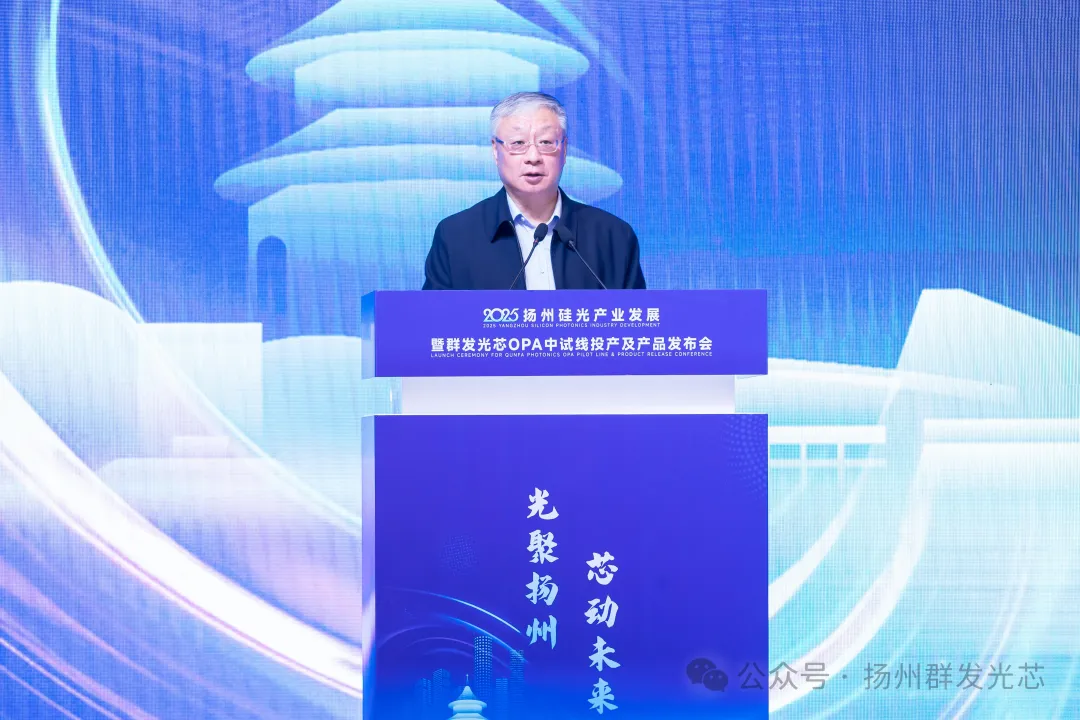
On behalf of the Municipal Party Committee and Municipal Government, Wang Jinjian congratulated the event and extended a sincere welcome to all experts and guests. He stated that Yangzhou is not only a renowned historical and cultural city with a blend of ancient and modern charm, but also a renowned city for industrial, scientific, and innovative development that is rapidly developing. In recent years, Yangzhou has focused on deeply integrating scientific and technological innovation with industrial innovation, vigorously promoting the development of a "613" modern industrial system. Next-generation information technology is one of Yangzhou's six key industrial clusters, and integrated circuits are one of the 13 emerging industrial chains it is cultivating. As an emerging sector in the integrated circuit industry, silicon photonics offer significant advantages such as low cost, low power consumption, high compatibility, and high integration. They hold broad market application prospects and are a key niche area for Yangzhou. The launch of the Qunfa Optical Photonics (OPA) pilot line will inject new momentum and create new opportunities for the development of Yangzhou's silicon photonics industry.
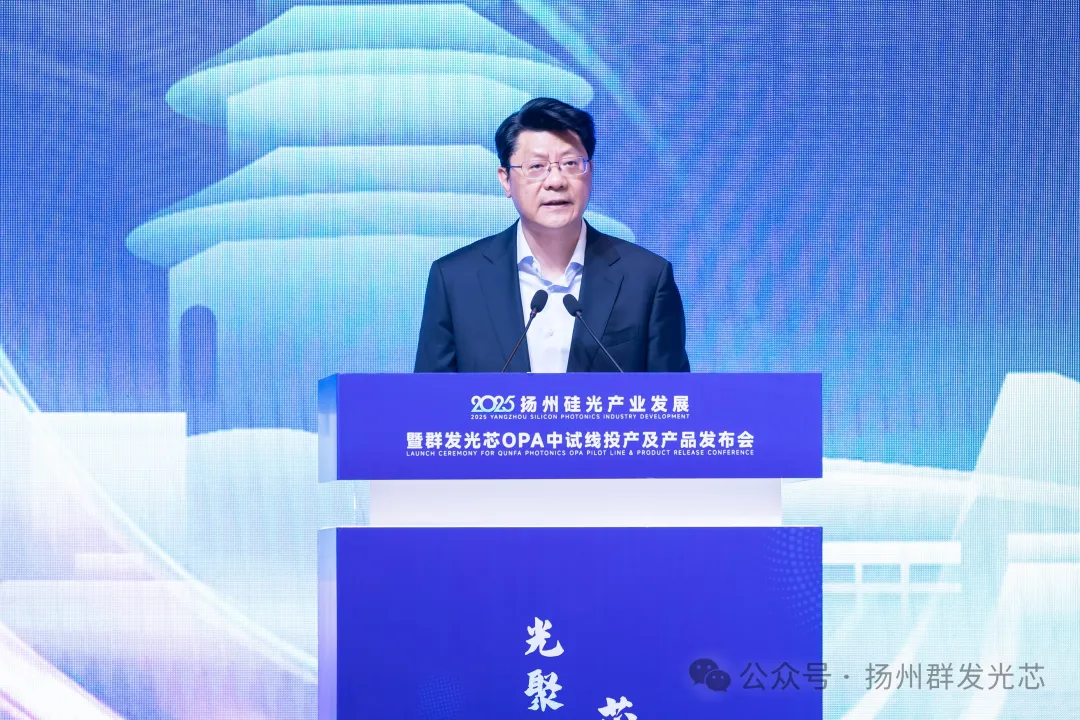
Wang Jinjian stated that to boost the development of the silicon photonics industry, Yangzhou will build a more innovative and vibrant industrial hub, strengthen the attraction and cultivation of silicon photonics industry projects, and actively promote the integration of applied research, technology development, and the commercialization of research results. He also stated that Yangzhou will provide policies with greater comparative advantages, tailor-made support measures for enterprises, and establish a more comprehensive and attentive service system. He emphasized that the city will attract businesses by creating a "business-friendly city" and accelerate the development of a "creditworthy Yangzhou," a "license-free Yangzhou," and an "efficient Yangzhou." He expressed his hope that all guests will continue to show their support for Yangzhou's development, offer advice for the city's silicon photonics industry, and attract more industrial, innovative, and talented individuals to the city. In his speech, Chairman Hui Xiaobing stated that Qunfa Optical Chip, as China's first integrated technology company integrating R&D and design, chip production, packaging and testing, and external sales, has focused on the cutting-edge of silicon photonics, mastered multiple core technologies, and built China's first OPA silicon photonics pilot line. The commissioning of this pilot line and the launch of its products mark a significant milestone in the development of Yangzhou's silicon photonics industry. The forward-looking planning of the Yangzhou Municipal Party Committee and Municipal Government is crucial to the development of the silicon photonics industry, and the commissioning of the pilot line will undoubtedly benefit local economic development. Yangzhou's optoelectronics industry has a well-developed structure, and the China Association for Promoting Science and Technology Industrialization will serve as a bridge and link, continuously providing comprehensive services such as technology integration, research application, and talent cultivation to support Yangzhou's development as a renowned city for industrial innovation.
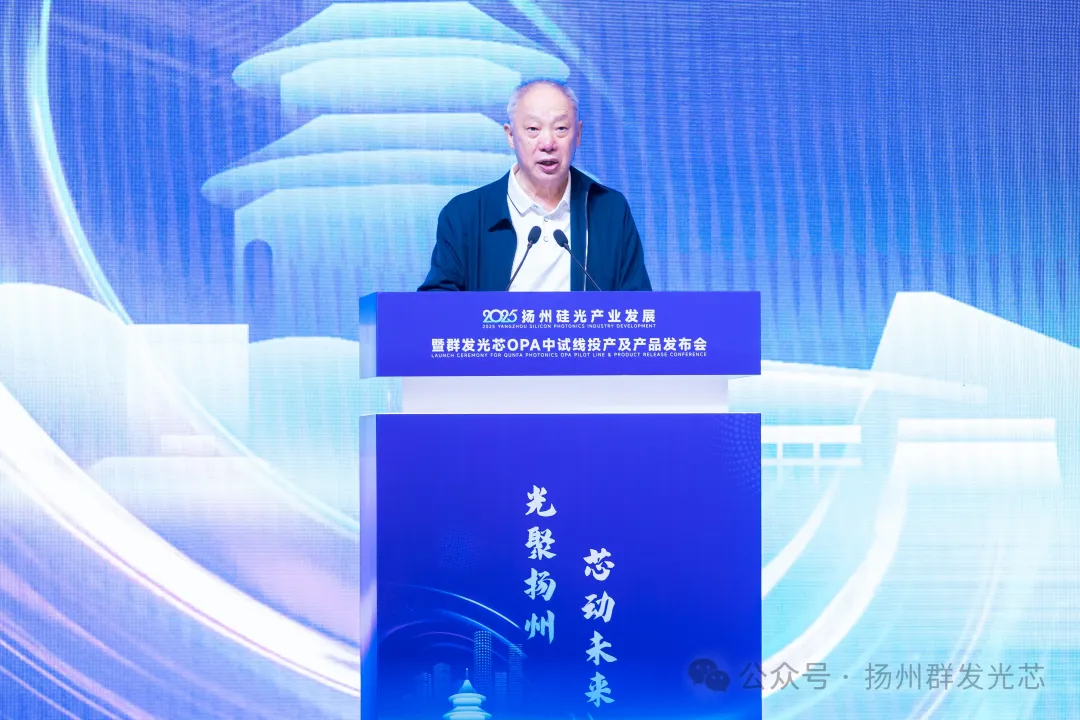
In his speech, Professor Yi Yasha said: "In the new wave of technological and industrial revolution, the silicon photonics industry is at a critical turning point in technological breakthroughs and large-scale applications. Globally, it exhibits diverse characteristics: accelerated technological iteration, exploding market demand, and a restructured ecosystem. As my hometown of Yangzhou, the development of cutting-edge technology industries has always been a concern of mine." The OPA pilot line is a significant step forward for Yangzhou in the silicon photonics industry, and it is poised to become an industry leader in the future. This year marks the conclusion of the 14th Five-Year Plan and the acceptance of the interim achievements of Yangzhou's silicon-based photonics industry. Like everyone else, I'm sincerely delighted that this new chapter in Yangzhou's silicon photonics industry, and the hard work of Qunfa over the years, is blossoming this spring.
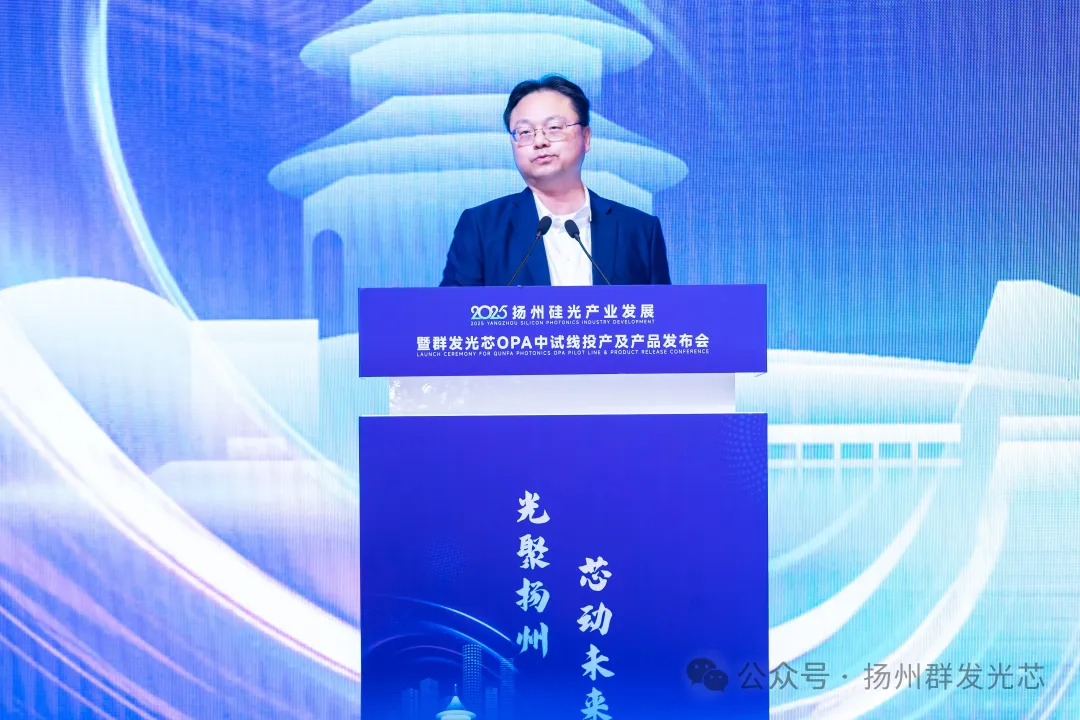
At the event, Gerald Henderson Jr., Chief Operating Officer of Innovative Electric Vehicle Technologies, delivered a speech on behalf of U.S. Congressman Gregory Weldon Meeks; Danny Mr. Wilkerson introduced the current status and future development trends of the international silicon photonics industry and presented a congratulatory letter from the Governor of Michigan to the Chairman of Qunfa Optical Chip, acknowledging the successful holding of this event.
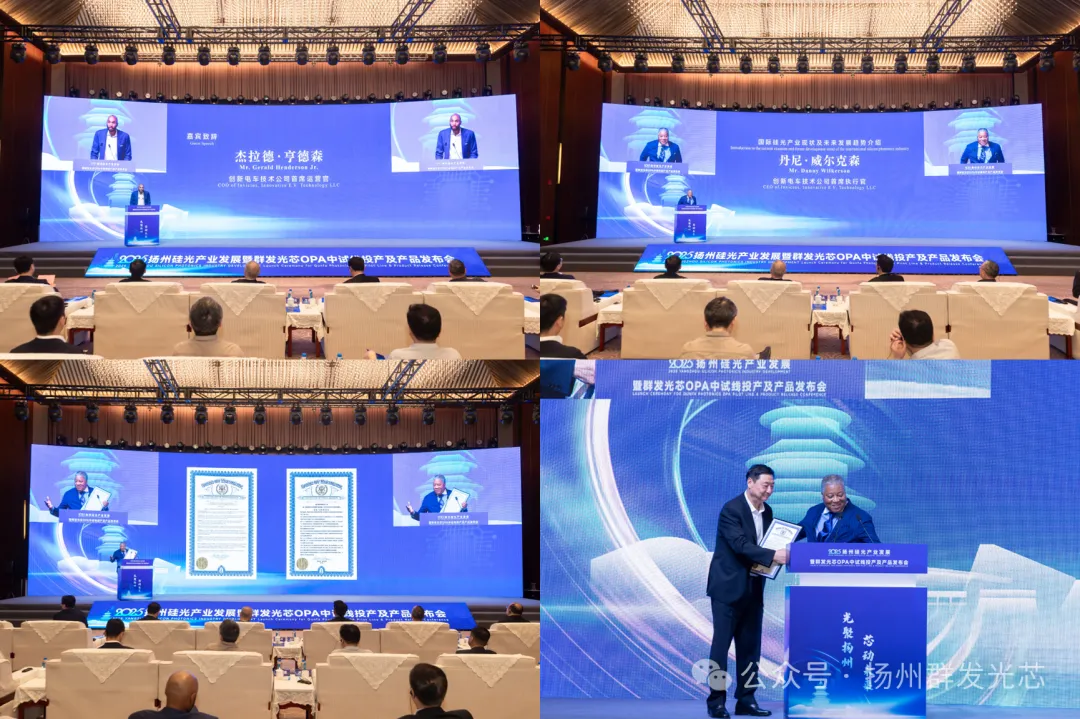
Wang Liang, Deputy General Manager of Yangzhou Qunfa Optical Photonics, briefed the leaders and guests on the occasion on the status of Qunfa's OPA pilot line. As the only innovative company in China's silicon photonics sector integrating R&D, design, manufacturing, packaging, and testing, their low-loss thick-film silicon nitride growth technology is not only applicable to OPAs but also in a wide range of fields, including optical communications and optical sensing. Witnessed by the leaders in attendance, the Yangzhou Silicon Photonics R&D Platform and Qunfa OPA pilot line officially commenced production.
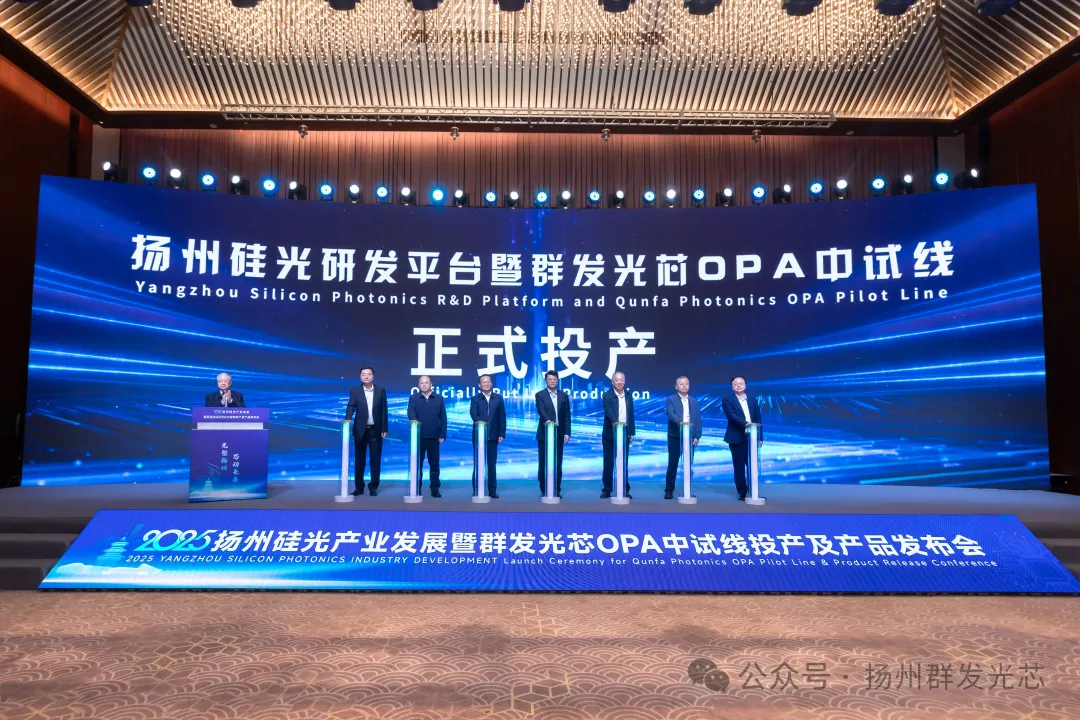
The technical director of Yangzhou Qunfa Optical Chip released an OPA 3D imaging application, introducing the application scenarios and future trends of OPA chips in specific machine vision and 3D imaging.
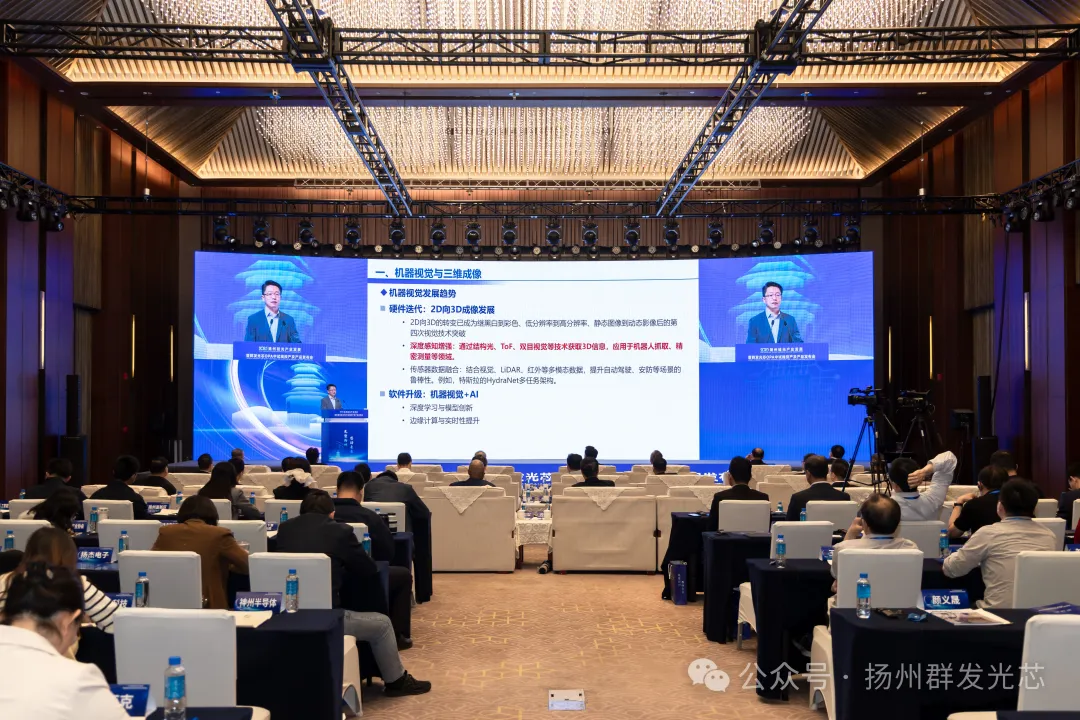
At the event, QunFa Optical signed four major agreements with its partners: the "OPA Silicon Photonics Chip Americas Agency Distribution Cooperation Agreement," the "Product Application Development Cooperation Agreement," the "Comprehensive Cooperation Agreement," and the "Financial Advisory Agreement."
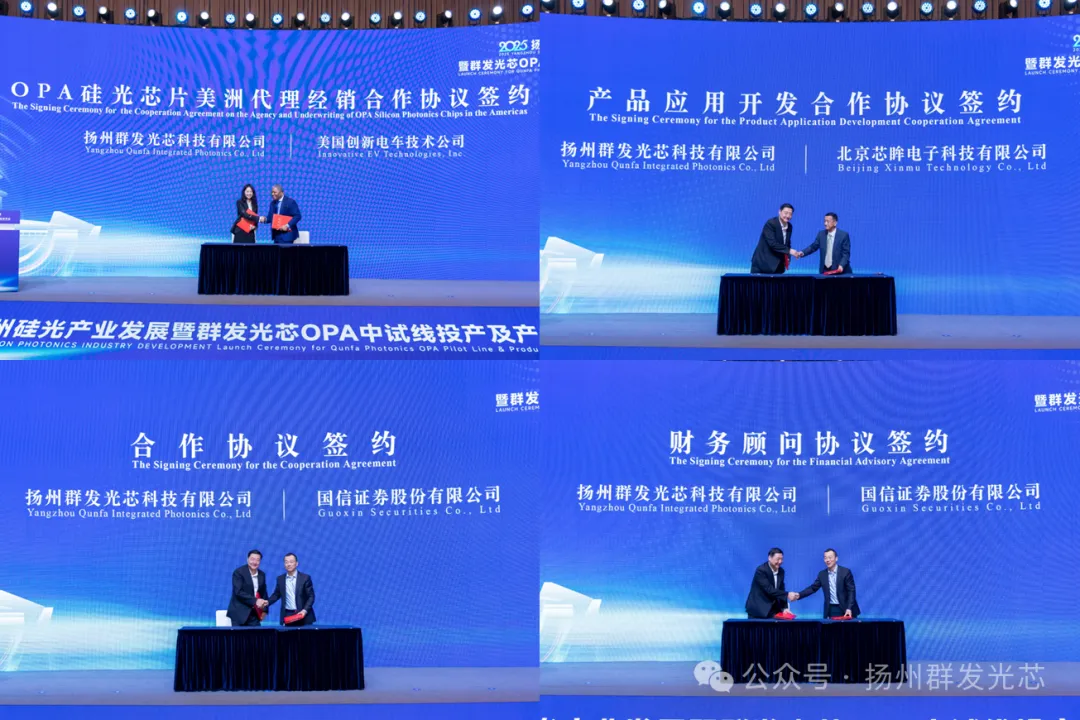
In the afternoon, chaired by Professor Yi Yasha, several industry experts presented presentations on topics including the development of the silicon photonics industry and the application of OPA optical phased array technology. Some experts advocated fully tapping the potential of the OPA pilot line and developing it into the "Yan'an" of the silicon photonics industry.

After the exchange, the experts were organized to visit the silicon photonics pilot line at Qunfa. The person in charge of Qunfa's photonics chip process technology provided a detailed introduction to each process station and factory management area.
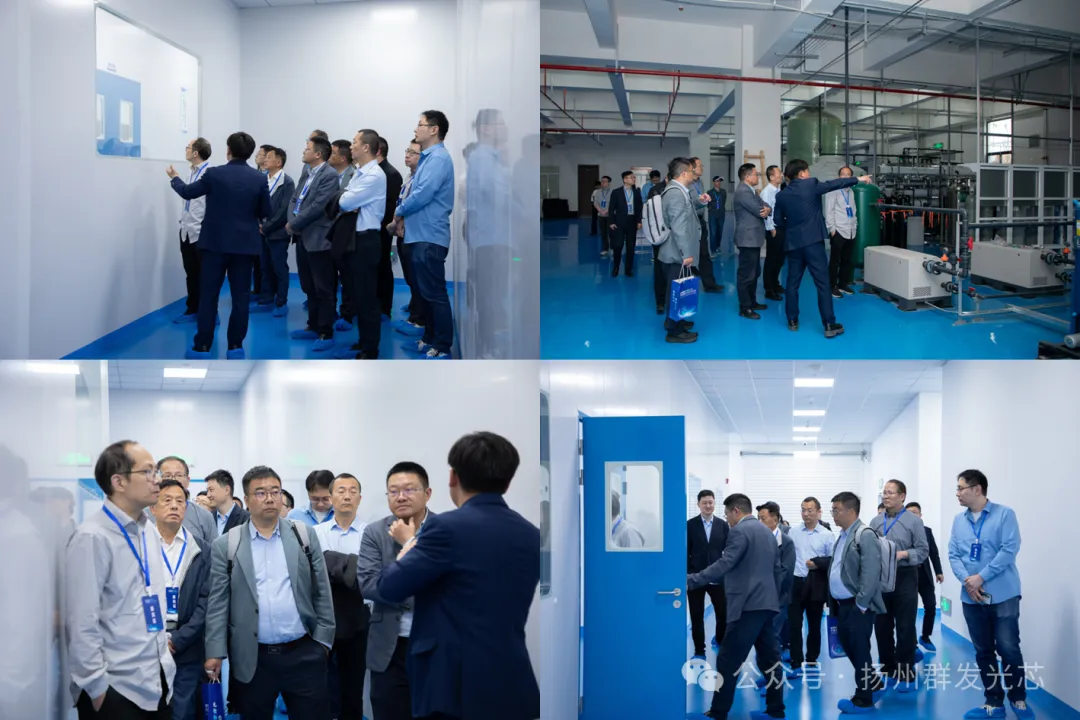
This event marks an important milestone in the industrialization of Qunfa Optical Chip's OPA chips. We welcome industry-related technical teams to visit Yangzhou for guidance and exchange, and to inspect the processing capabilities of the silicon photonics pilot line.



